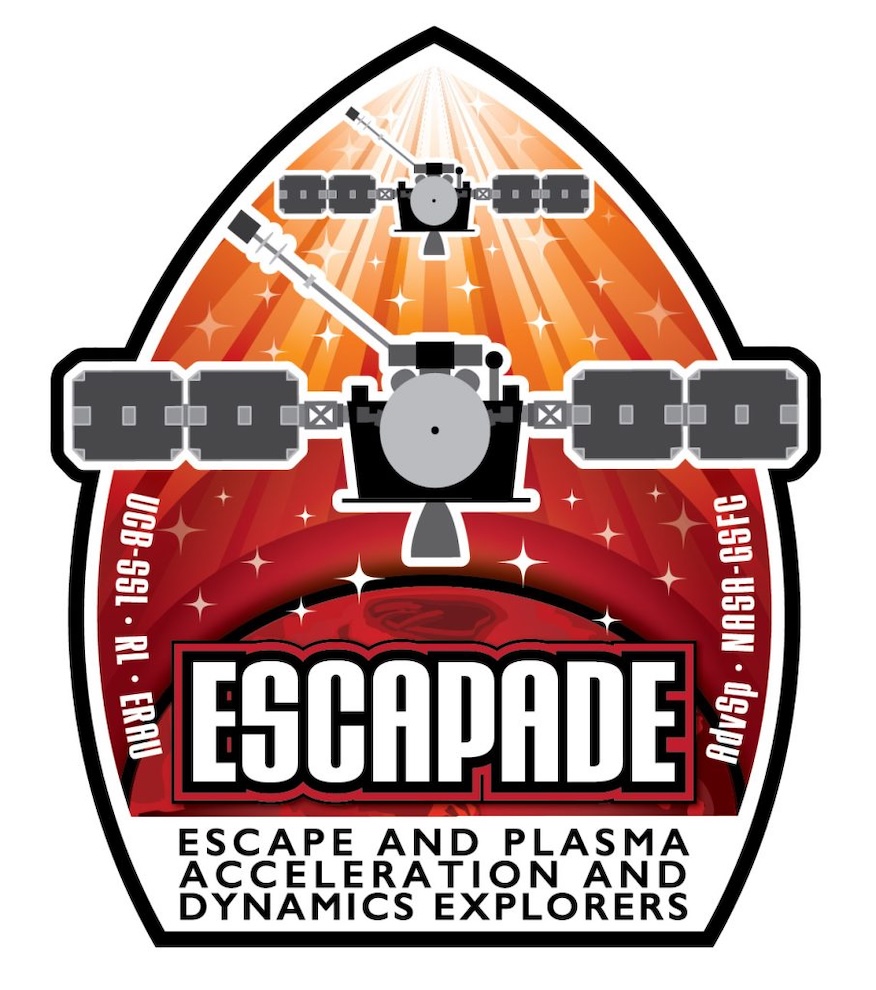
Blue Origin’s second New Glenn rocket is scheduled to take flight no earlier than Sunday, Nov. 9, and launch a pair of Mars-bound satellites for NASA along with a communications demonstration payload for Viasat.
The 321-foot-tall (98 m) rocket will fly on a south-easterly trajectory upon leaving Launch Complex 36 at Cape Canaveral Space Force Station. Blue Origin is targeting liftoff during an 88-minute window that opens at 2:45 p.m. EST (1945 UTC).
Spaceflight Now will have live coverage beginning about two hours prior to liftoff.
The 45th Weather Squadron forecast a 65 percent chance for favorable weather at the opening Sunday’s launch opportunity, but that slides to 55 percent as time goes on. Meteorologists cited concerns with cumulus clouds, lightning and anvil clouds, noting that a cold front will be in place by Sunday.
“As the front approaches the region from the northwest, there will be enough moisture in place for showers to form out ahead of and along the front,” launch weather officers wrote. “A few strong to severe thunderstorms may develop Sunday afternoon, with a small chance of a thunderstorm wind gust near 80 fps.”
Like with the first New Glenn launch in January 2025, Blue Origin will attempt to land its first stage booster on its autonomous barge, Jacklyn. The 188-foot-tall (57.4 m) booster named ‘Never Tell Me the Odds’ will progress from using three to then one BE-4 engine to perform the final landing burn.
Blue Origin previously said it plans to reuse this booster on its third flight if all goes well with this recovery effort. The company’s CEO, Dave Limp, said in a social media post on Wednesday that all will be well even if they’re unable to recover this booster.
“We’ve got several more New Glenn boosters already in production,” Limp wrote.

The New Glenn 2 (NG-2) mission will be the first time that Blue Origin’s orbital class rocket will carry customer payloads to space. The two ESCAPADE spacecraft — named ‘Blue’ and ‘Gold’ — were encapsulated inside the rocket’s 23-foot-diameter (7 m) payload fairings on Oct. 31.
Blue Origin will perform two burns of the BE-3U engines on the rocket’s upper stage before the twin satellites deploy about 33 minutes after liftoff. The Viasat tech demo will activate about five minutes after the second ESCAPADE satellite, Gold, is released.
The launch was coordinated by NASA’s Launch Services Program, based at the Kennedy Space Center. The rocket was assigned through the agency’s Venture-Class Acquisition of Dedicated and Rideshare (VADR) launch services contract.
The overall contract has a maximum total value of $300 million over a five-year ordering period. When it was assigned to Blue Origin with its New Glenn rocket, the ESCAPADE mission was scheduled to launch in late 2024 on the inaugural flight of the rocket.
However, because New Glenn wasn’t ready to fly in time, the mission was moved to the rocket’s second launch.

Mission to Mars
NASA’s ESCAPADE’s science mission is led by NASA’s Goddard Space Flight Center and the University of California, Berkeley, Space Science Laboratory. The mission is being done in collaboration with Rocket Lab, Advanced Space, Embry-Riddle Aeronautical University and Northern Arizona University.
The two spacecraft will work in tandem to better understand Mars’ magnetosphere and learn how its affected by space weather. That give researchers a better grasp on the climatological history of the Red Planet and how it lost its atmosphere.
“Really excited to see (NASA’s) Heliophysics’ first mission to Mars and being able to deliver that space weather information that will hopefully help as humanity expands out into the cosmos,” Joseph Westlake, NASA Heliophysics Director, told Spaceflight Now in in an interview earlier this year.
What began as the Mars Ion and Sputtering Escape Network (MISEN) concept proposal in October 2016 evolved in to ESCAPADE by July 2018. In June 2019, NASA picked it as one of three finalists as part of the agency’s Small, Innovative Missions for Planetary Exploration or SIMPLEx for short.
These types of missions are designed with a higher risk tolerance, a shorter timeline and a lower budget.

“We had three-and-a-half years to make two satellites to go to Mars. A typical timeline for a Mars mission is a decade,” said Christophe Mandy, during an August 2024 media tour of Rocket Lab’s Long Beach, California, facilities.
“Big missions, like [Mars Sample Return], MSR started in 2002, so it’s already been over two decades. That’s the normal pace for an interplanetary mission,” Mandy said. “We had three-and-a-half years for everything.”
Blue and Gold were built on Rocket Lab’s Explorer satellite bus, characterized by the company as a “high delta-V spacecraft with large propellant tanks, deep space capable avionics, and ranging transponders.”
“The Explorer product line has a very, very high mass fraction that is fuel,” Mandy said. “In the case of ESCAPADE, it’s almost 70 percent, which is an enormous number. So, if you are the type of mission that needs a lot of delta-V, you’ll probably go for Explorer.”
The spacecraft will linger in Earth orbit for about a year before beginning a 10-month cruise to Mars. This altered trajectory, created by Advanced Space, was a result the launch delay of more than a year.
The Mars orbit insertion burn is anticipated in September 2027 with checkouts and orbit refining to follow. The science mission is scheduled to last from June 2028 until May 2029.
Long Beach ➡️ Cape Canaveral ➡️ MARS
Our ESCAPADE spacecraft have already travelled across the country and soon will be on their next – and much longer – journey to Mars. Our twin spacecraft have a 43-month mission ahead of them, with 11 months spent studying Mars’… pic.twitter.com/GTPK3ah3as
— Rocket Lab (@RocketLab) November 6, 2025

Be the first to comment